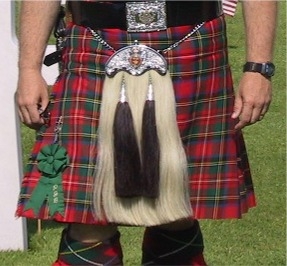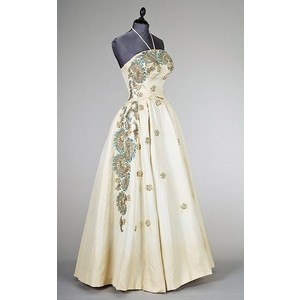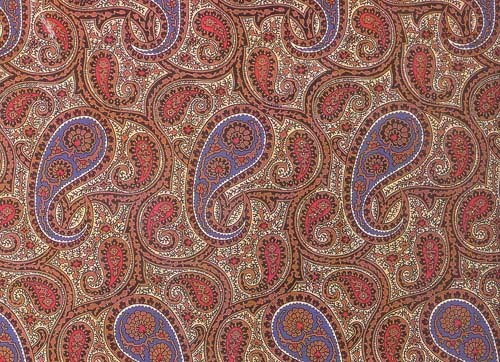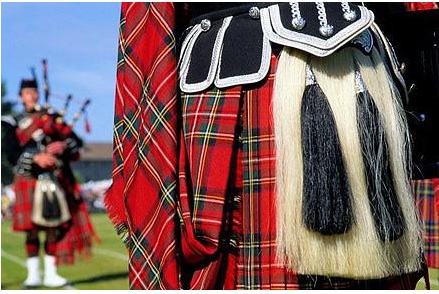The tartan kilt has long been the most recognisable cultural tradition of the Highland Scots. The basic concepts of the tartan and the wearing of the kilt have their origin in the history of the early Scottish and Irish clans. It has been demonstrated that certain clans did aspire to a certain uniformity of design for their garments as early as the tenth and eleventh centuries.
The kilt, or philabeg to use its older Gaelic name, has its origin in an older garment called the belted plaid. The Gaelic word for tartan is breacan, meaning partially coloured or speckled and every tartan today features a multicoloured arrangement of stripes and checks. These patterns or sett’s, are used to identify the clan, family, or regiment with which the wearer is associated. Although the kilt is the most recognisable of the tartans, it also manifests itself in the form of trews (trousers), shawls, and skirts.
The first tartans were the result of individual weavers own designs which were slowly adopted to identify individual districts, then finally clans and families. The first recognisable effort to enforce uniformity throughout an entire clan was in 1618, when Sir Robert Gordon of Gordonstoun, wrote to Murry of Pulrossie requesting that he bring the plaids worn by his men into “harmony with that of his other septs.”
After 1688, and the fall of the Stuart clan, and subsequent rise in the spread of Jacobism, the English government felt the need to take a more active interest in the Highland affairs. In 1707,The Act of Union took place, and succeeded in temporarily uniting the political factions and clans that were universally opposed to the Act.
The tartan came into it’s own as a symbol of active nationalism and was seen by the ruling classes to be garb of extremism. It is also believed that this act of parliament succeeded in uniting, to some extent, the Scottish Highlands and Lowlands, as the wearing of the tartan spread from the Highlands to the Lowlands, previously not known for their wearing of the tartan.
After the rising of 1715, the Government found the need to enforce stricter policing of the Scottish Highlands and Lowlands. A number of independent companies were formed to curtail the lawlessness that had developed. One of the features that distinguished their recruits were the large number of highland gentlemen that enlisted and chose to serve in the private ranks. Many an English officer was surprised to see these Scottish privates attended by personal servants who carried their food, clothing, and weapons. From the time they were first raised, these independent regiments became known as the Black Watch, in reference to the darkly coloured tartans they were known to wear.
In 1740, these independent companies became a formal regiment and the need arose to adopt a formal tartan. This became a problem, for what tartan could they choose, without insulting certain clans, or seeming to favour others? In the end, an entirely new tartan was developed and has ever since been known as the Black Watch Tartan. It was the first documented tartan to be known by an official name and possesses the authenticity of a full pedigree. From this tartan has been derived all of the Highland regimental tartan designs and many of the hunting setts worn by other clans.











